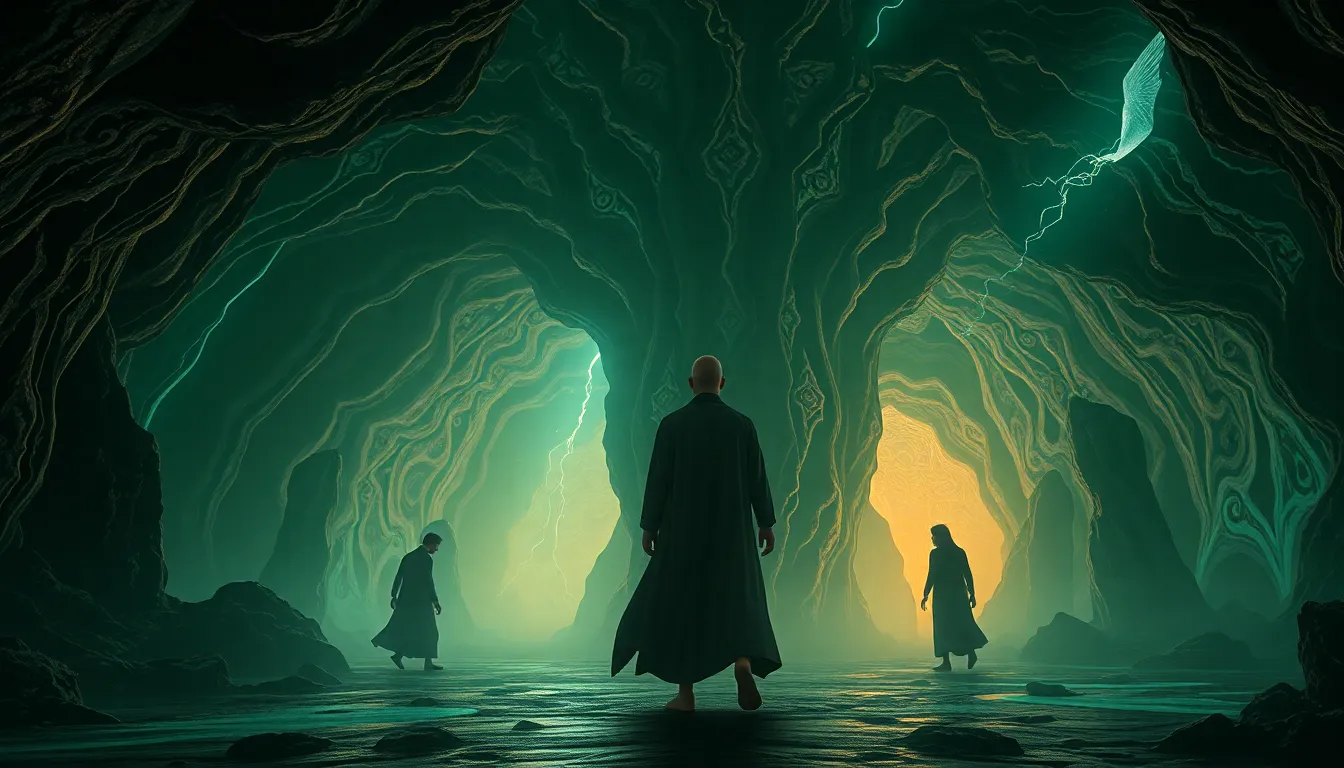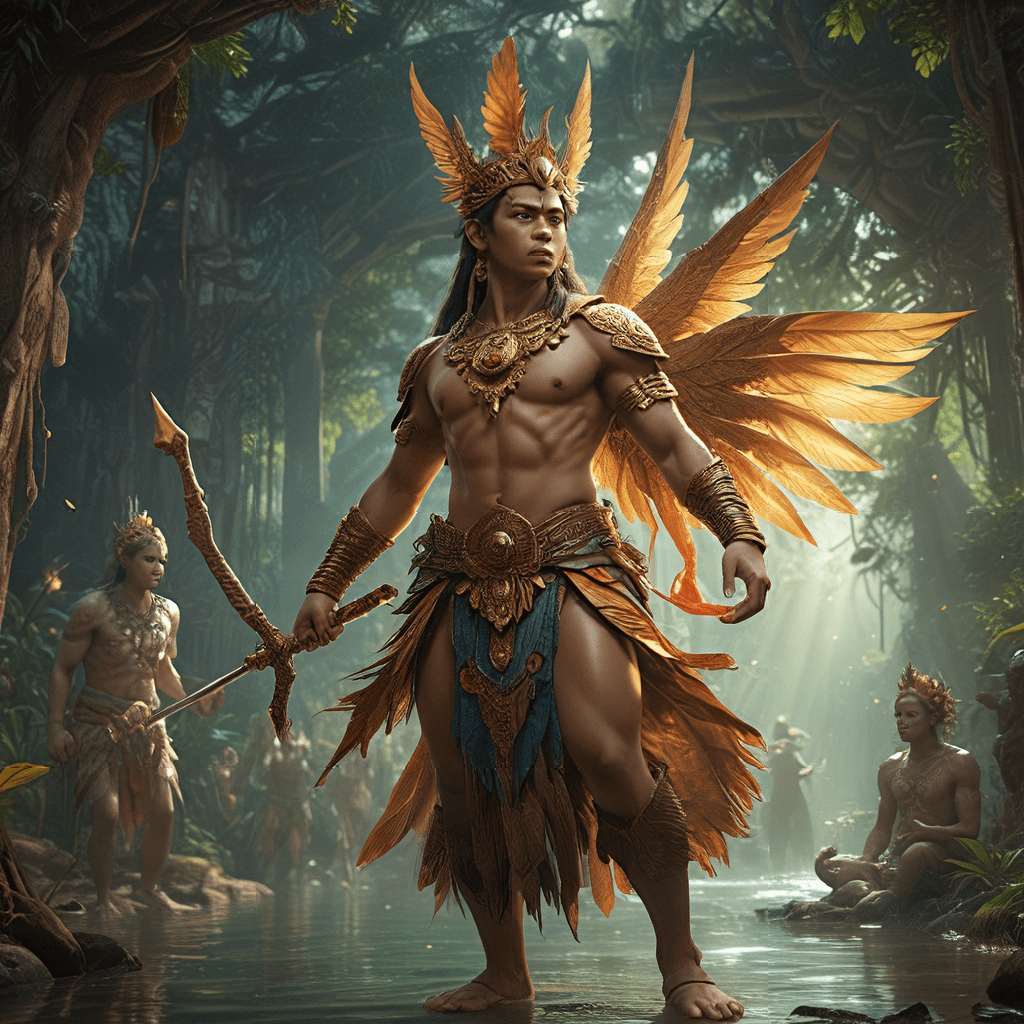The Underworld: Myths That Explore the Human Condition
Introduction to the Concept of the Underworld
The concept of the underworld is a pervasive theme across numerous mythologies, serving as a realm that often contrasts sharply with the world of the living. In various cultures, the underworld is defined as a place where souls go after death, a domain of the deceased that reflects both the fears and fascinations humans have regarding mortality. This concept holds significant weight in exploring not just the inevitable end of life, but also a multitude of human emotions and experiences such as fear, hope, and redemption.
Historical Perspectives on the Underworld
Underworld myths have evolved significantly throughout history, adapting to the cultural contexts of various civilizations. Here’s a brief overview of some of the most notable underworld concepts:
- Greek Mythology: Hades, the lord of the underworld, governs a realm where souls reside after death, often perceived as a dark and dreary place.
- Egyptian Mythology: Duat is the Egyptian underworld, where the deceased undergoes judgment and must navigate a series of trials to reach the afterlife.
- Mesopotamian Mythology: The underworld, known as Kur, is a shadowy place where all souls go, regardless of their actions in life.
As societies progressed, the interpretations and depictions of the underworld transformed, often reflecting the moral and spiritual beliefs of the time.
The Underworld as a Reflection of Mortality
Underworld myths serve as a lens through which civilizations examine their understanding of death and the afterlife. These narratives often highlight the fear of the unknown and the quest for immortality.
In Greek mythology, Hades is not merely a place of punishment but also a realm where souls continue their existence. In contrast, the Egyptian Duat presents a more structured approach to the afterlife, where the deceased must face a series of challenges. For example:
- The Weighing of the Heart: The heart of the deceased is weighed against the feather of Ma’at, the goddess of truth and justice. A balanced scale allows the soul to enter the afterlife, while an unbalanced scale results in eternal damnation.
The Role of Judgment and Redemption in Underworld Myths
Judgment is a prominent theme in many underworld myths, reflecting moral implications that resonate with human experiences. The idea of facing consequences after death serves to instill a sense of accountability in life.
For example, in the Norse tradition, the dead are judged based on their deeds in life, determining their fate in the afterlife realms of Valhalla or Hel. This moral framework can be observed through:
- Egyptian Judgment: The heart must be lighter than a feather to achieve redemption.
- Christian Paradigm: Concepts of heaven and hell serve a similar purpose, emphasizing the importance of moral living.
Symbolism of the Underworld: Darkness and Light
The duality of the underworld as a domain of despair and potential hope is a recurring theme in mythology. Darkness often symbolizes ignorance and fear, while light represents knowledge, redemption, and transformation.
Many myths depict the journey through the underworld as a transformative experience, leading to personal growth. For instance, in Dante’s “Inferno,” the dark journey through hell ultimately leads to enlightenment and redemption.
Cultural Variations: Comparing Underworld Myths Across Civilizations
Different cultures have developed unique narratives regarding the underworld, shaped by their values and beliefs. Here’s a comparative analysis of some significant underworld concepts:
- Greek Underworld (Hades): A place of shadows, where souls wander without purpose.
- Norse Underworld (Hel): A realm governed by the goddess Hel, where those who did not die gloriously in battle reside.
- Hindu Underworld (Naraka): A temporary place for souls who have committed sins, where they experience suffering before rebirth.
These narratives provide insight into how cultural values shape perceptions of morality, death, and the afterlife.
The Underworld as a Metaphor for Psychological Struggles
Underworld myths often reflect psychological struggles and human fears. The descent into the underworld can symbolize a journey through personal challenges, depression, and existential despair.
Characters who navigate these realms frequently emerge transformed, illustrating the potential for growth through adversity. For example:
- Persephone: Her journey to the underworld and back represents the cycles of life, death, and rebirth.
- Orpheus: His descent to retrieve Eurydice embodies the themes of love, loss, and the haunting nature of grief.
The Influence of Underworld Myths on Literature and Art
Myths of the underworld have profoundly influenced literature and art throughout history. These narratives inspire countless works that explore themes of death, morality, and the human experience.
Notable examples include:
- Dante’s Inferno: A pivotal literary work that vividly depicts the journey through hell and the consequences of sin.
- Virgil’s Aeneid: The descent into the underworld offers insights into fate, duty, and the quest for purpose.
These works continue to resonate with audiences, illustrating the timeless relevance of underworld themes.
Modern Interpretations of the Underworld
In contemporary media, the concept of the underworld has been reinterpreted in various forms, from films to novels. Modern narratives often blend ancient themes with current societal issues, creating new contexts for these age-old tales.
Examples include:
- Film: Movies such as “What Dreams May Come” and “The Others” explore afterlife concepts through a modern lens.
- Literature: Works like Neil Gaiman’s “American Gods” incorporate underworld mythology to examine identity and belief in a contemporary setting.
Conclusion: The Enduring Legacy of Underworld Myths
The study of underworld myths reveals profound insights into the human condition, emphasizing our collective fears, hopes, and moral struggles. These narratives transcend time and culture, offering a mirror to our own experiences with mortality and transformation.
As we continue to explore the underworld in literature, art, and popular culture, we find that these ancient stories remain relevant, helping us navigate the complexities of life and death. The underworld serves not only as a place of despair but also as a realm of potential rebirth and understanding, reflecting the enduring nature of the human spirit.


